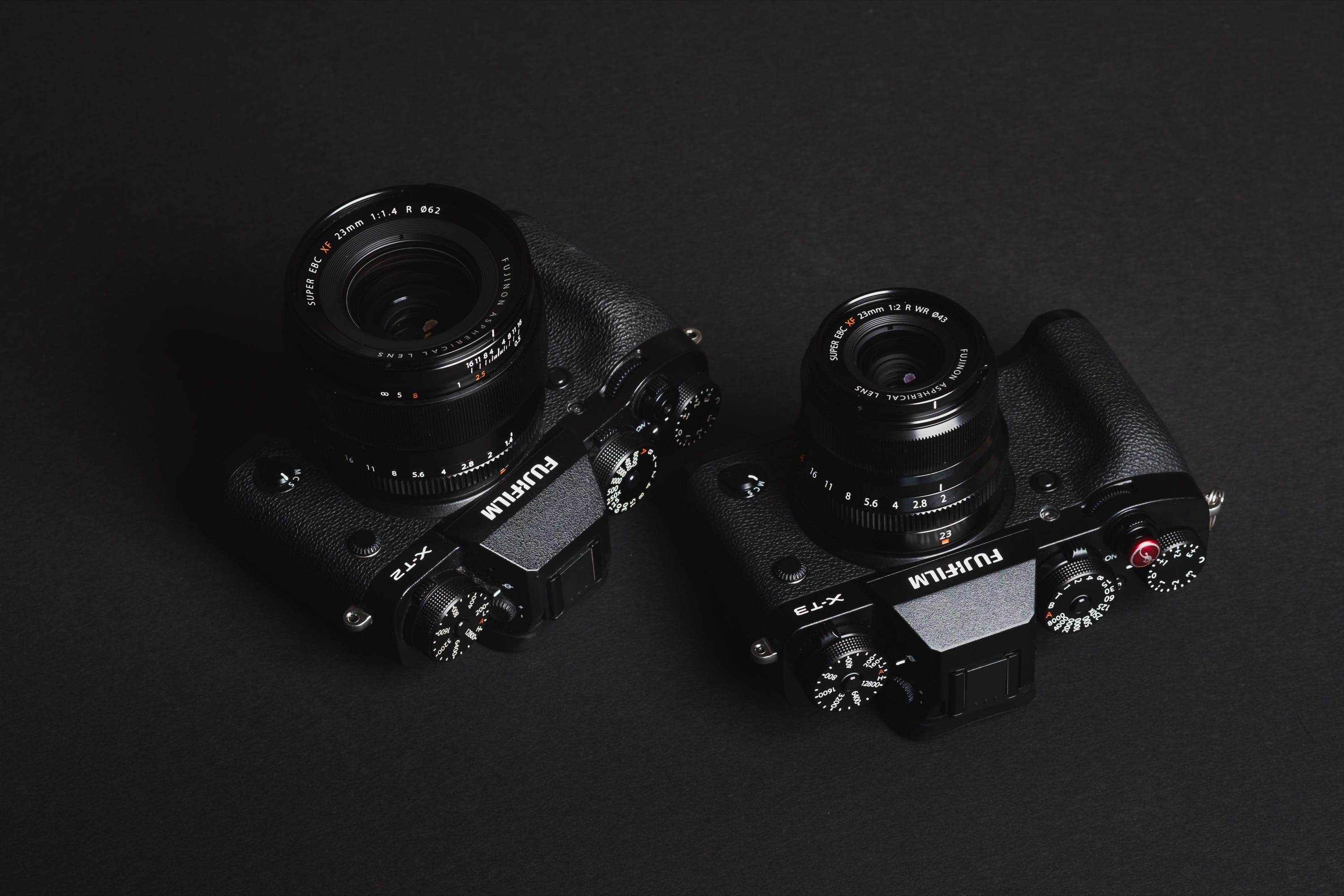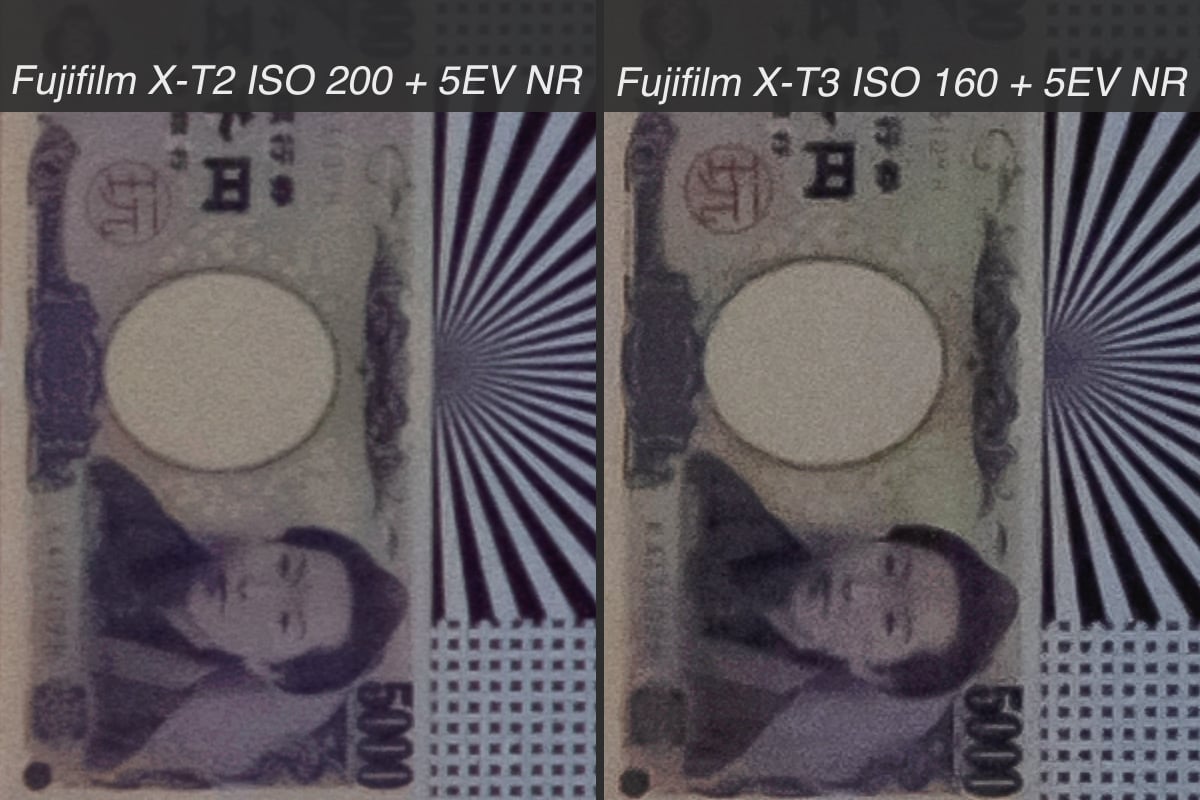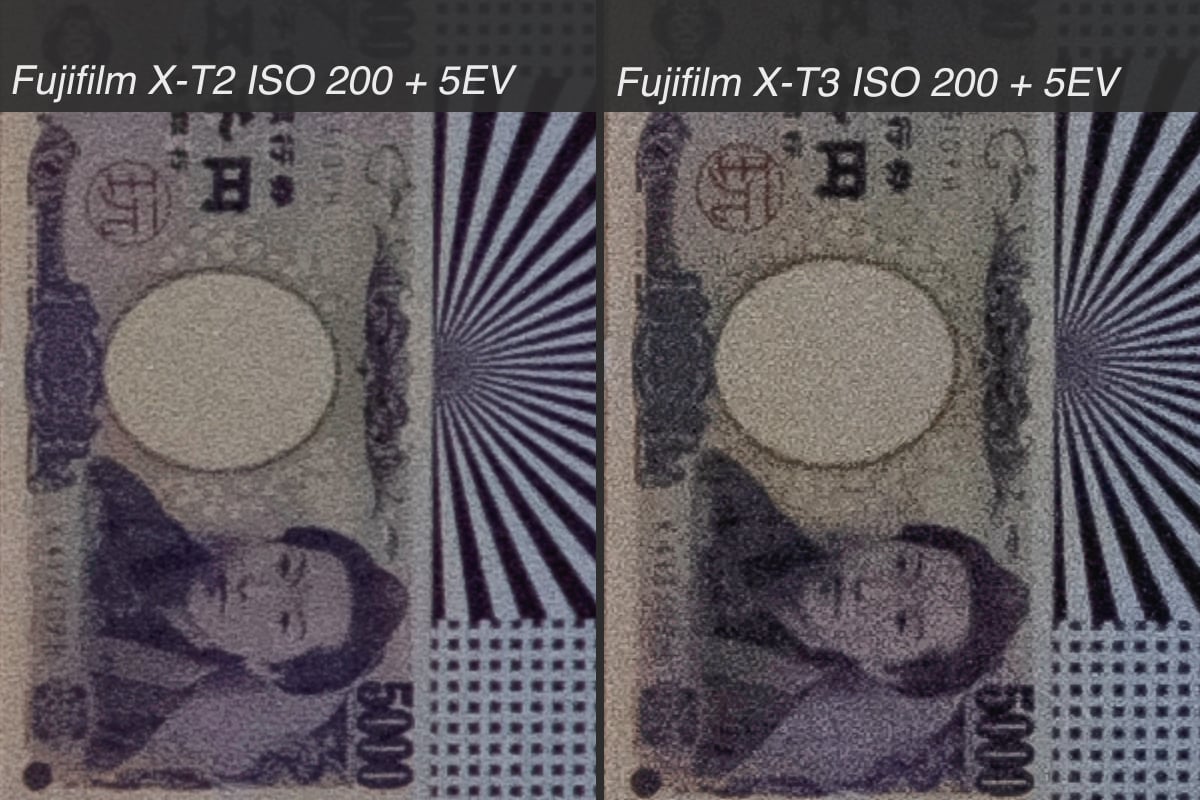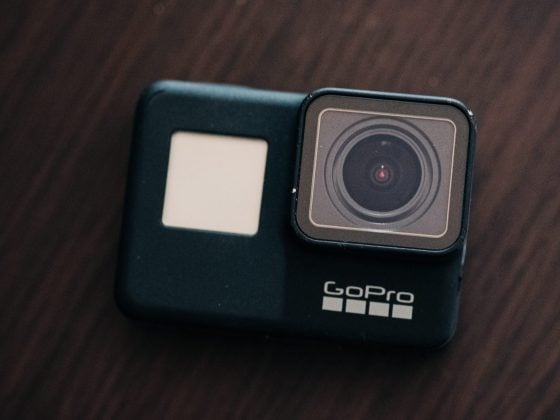
There has been a lot of discussion around the Fujifilm X-T2 vs the Fujifilm X-T3 regarding low light performance and dynamic range.
From first looks with DPreview comparing the X-T2 to the X-T3, there was a pretty significant difference in the low light performance. The X-T3 had significantly more grain, it also had a green cast on the skin tones.
For my tests, I waited for Adobe Lightroom to support the X-T3 since that is what most people use. I did not want to use some funky software to put out bogus results for the sake of being first to the scene.
So here we are, tests from Adobe Camera Raw.
For this test I ran the X-T2 against the X-T3 on the same test board, under the same lighting with the same lens. Not two copies of one lens, but the exact same lens (ignore the picture above). I did use autofocus because trying to manual focus a Fujifilm lens gives me too much anxiety and it’s very difficult to get precise.
My results show some of what we have been seeing with other comparisons but I decided to go a little deeper and mess around with noise reduction and sharpening.
X-T3 vs X-T2 High ISO / Low Light Performance
I pushed low light performance to the extreme to see the difference between the X-T2 and X-T3.
It appears that there is some chunkier grain on the X-T3, but the image overall is sharper and has more clarity. Perhaps the RAW engine inside the camera is applying a little more sharpness to the RAW files making the grain seem a little bit more pronounced.
After applying noise reduction, the X-T3 images still have more sharpness and more punch. You could massage the sharpness and the noise reduction on both files to get them looking closer, but initially, I do see slightly nicer images out of the X-T3 after noise reduction corrections.
For all these tests I left Lightroom sharpness to default. When I stripped all sharpness, it was too harder to see the difference so I left it for the sake of presentation.
All samples taken from Uncompressed RAW.
ISO 6400
No noise reduction here. Just Lightroom defaults.


ISO 12800
No noise reduction here. Just Lightroom defaults.
As you can see the noise at ISO 12800 is a little bit more pronounced just like we’ve seen in some other comparisons, although I don’t think this is as bad.
ISO 12800 + Noise Reduction
To see if I could really pull more detail out of the X-T3 files, I applied some noise reduction, matching settings with each camera.
At ISO 12800 with noise reduction applied, the X-T3 image has more detail but it looks like this is because I believe the X-T3 RAW files are being pre-baked with some sharpness applied.

Since the X-T3 images look sharper, I applied more sharpness (+10) to the X-T2 to get them to match. The results are pretty dang close.
There are some areas where I can see more detail in the X-T2 and some areas where I can see more detail in the X-T3. Maybe this is random and due to where the phase detection pixels are landing on the sensor.
Overall, I feel like contrast and the tonal details are a little bit better on the X-T3 compared to the XT2, but the X-T3 image is a hair darker with matched settings. Not sure why.
Here is a sample with Noise Reduction and + 10 sharpness on the X-T2 vs the X-T3 with just noise reduction.

In this sample you can see a little bit more noise with the X-T2. The X-T3 image is a little cleaner.

When looking at high ISO performance, I would say the difference between the X-T2 and the X-T3 is fairly insignificant. Any advantage you see is probably from the higher resolution of the X-T3 sensor with slightly more tonal details from the BSI sensor.
These are 200% crops. You’ll probably never notice this difference in a real world photo assuming you match sharpness.
X-T3 vs X-T2 Dynamic Range
Here I lifted the under exposed test board by 5 stops.
When looking at dynamic range, I’m seeing very similar results as we saw when looking at the high ISO tests.
Here are samples matching the Lightroom default sharpness with noise reduction applied.
You can see there is a lot more purple amp glow in the shadows on the X-T2 side with a little bit more color bleed.
Here I did not raise sharpness on the X-T2 to match. Tones and colors are much nicer on the X-T3.

Here both cameras are set to ISO 200.
Same thing, purple in the shadows on the X-T2, image on the X-T2 is also not as sharp because I did not apply sharpness in post. This sample has noise reduction applied.

This next sample has no noise reduction, just Lightroom defaults. Grain on the X-T3 is punchier, likely because the new sensor has added sharpness as demonstrated in the high ISO tests above.

With all these samples, the X-T3 looks shaper but has more pronounced noise because the images by default have punchier RAWs. After noodling with them for a while I can see sometimes the X-T2 images have every slightly more detail with slightly less blotchy noise, but the X-T3 performs better with color tones with less blotchy solid colors. The main thing is the blacks look nicer with the X-T3 with less amp glow and color bleed.
Fujifilm X-T3 vs X-T2 Conclusions
This busts the myth that the X-T3 images have more noise at high ISO. It does not, rather the RAW files are being pre-backed with more sharpness that enhances the noise. Once you correct both images to match sharpness, the noise is about the same.
However, when lifting exposure and then looking at shadow details, I do see slightly blotchier noise on the X-T3 even when doing everything to correct the X-T3 to match the X-T2 but it’s very minor. When looking at colors, especially in the shadows, they are noticeably better on the X-T3.
It looks like Fujifilm took advantage of the superior BSI tech in a different way than we were all expecting. Instead of giving us significantly improved dynamic range and low light performance, they gave us improved sensor readout speeds by running everything at a higher frequency. 4k60, less rolling shutter and faster fps which causes more heat and more noise. Just my guess anyway assuming cameras run a lot like computers, and I’m probably wrong. But, I have noticed the X-T3 runs much hotter than the X-T2 and heat will cause a sensor to generate more noise.
Fujifilm’s New RAWs
The Fujifilm X-T3 images look like they have more sharpness and more noise maybe because they got tired of everyone saying Sony RAW files were sharper and they’re now cooking their RAWs to have a touch more sharpness. I don’t think a lot of people realize that RAW files are not some universal unprocessed untouched format. Camera brands can apply their own look to RAW files which is why some sensor seem sharper and some have “better color science.”
For example, a lot of people love Canon because of the “Canon look.” It’s the way Canon processes their RAW files to push for color harmony just a little. This is why also Sony cameras look bad to a lot of people, they don’t push for color harmony rather, they let their RAW files have a more clinical, almost hyper real look but with a ton of boosted sharpness to satisfy the pixel peepers.
So Sony cameras having bad color science is not exactly accurate. Sony cameras have great color science, just terrible color theory because that’s not what they’re going for. Canon and especially Fujifilm push their colors around to produce tones that are more pleasing to the human psychology and this time around Fujifilm boosted their sensor sharpness which ultimately is just an in-camera post effect applied to the RAW files.
Final Thoughts
I spent hours pixel peeping and noodling settings and comparing high ISO performance and dynamic range between the Fujifilm X-T2 and X-T3. When looking at real world performance, you will see slightly sharper images with the X-T3 due to them cooking punchier RAW files, but you can almost match that by adding around +10 to sharpness on the X-T2 in Lightroom.
In terms of low light performance and shadow recovery, after applying noise reduction and adjusting sharpness, you’ll probably never notice any difference in detail as it’s very subtle, but the shadows will have less purple in them on the X-T3. Some colors look cleaner and less splotchy, especially red, and there is a very subtle improvement in the tonal gradations of grey and colors with the X-T3.
This gets me thinking.
Could Fujifilm dumb down the specs, slow down the sensor readout and give us an X-Pro3 that has significantly improved dynamic range and low light performance? Or does that type of thing not actually affect low light performance?
As a side note, I also notice the Bayer sensor on the X-T100 has punchier super sharp raw files as well, so this might be what Fujifilm will be doing moving forward.
To learn more about the X-T3, check out my in-depth Fujiilm X-T3 review.
| **This website contains affiliate links. We will earn a small commission on purchases made through these links. Some of the links used in these articles will direct you to Amazon. As an Amazon Associate, I earn from qualifying purchases. |







